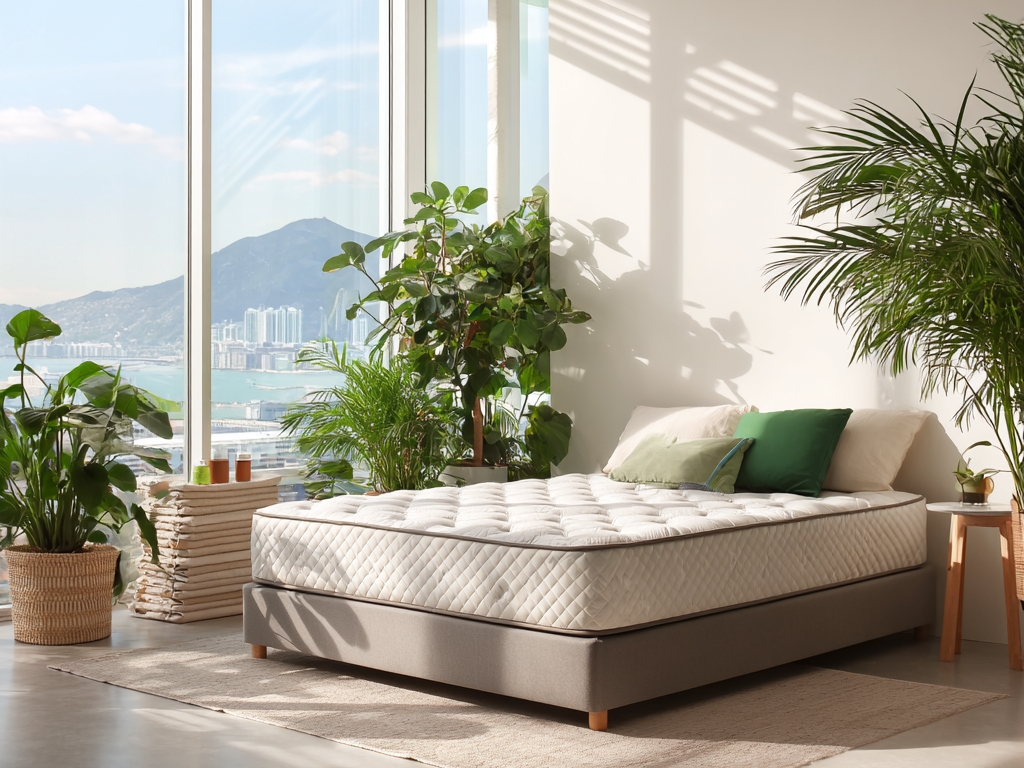When people think about sustainability, mattresses probably aren’t the first thing that comes to mind. We focus on recycling bottles, cutting down on single-use plastics, and buying secondhand clothes. Yet, the humble mattress—especially in dorms, hospitals, and shelters—plays a surprisingly large role in the waste cycle.
Every year, millions of discarded mattresses clog up landfills, and their bulk and materials make them notoriously difficult to recycle.
Enter vinyl-covered mattresses—a practical, long-lasting alternative designed to withstand heavy use.
But do they really help reduce waste, or are we simply trading one problem for another?
Let’s break down the eco-impact.
Why Mattress Longevity Matters in Waste Reduction?
A standard mattress, whether in a dorm or a medical setting, sees constant wear and tear. Fluids, spills, and daily use quickly compromise fabric and foam, often leading to replacement far sooner than expected. Each time a mattress is discarded, it contributes to landfill waste.
Now consider this: if a vinyl-covered mattress lasts three to five years longer than a traditional one, the waste reduction is significant. It’s not just about one mattress—it’s about hundreds or thousands used across institutions. Longevity reduces the frequency of disposal and, in turn, lowers the environmental footprint.
Durability as a Sustainability Strategy
Vinyl coverings act as a shield against stains, bedbugs, and moisture. This added durability means mattresses can withstand environments where hygiene and resilience are non-negotiable, such as hospitals, group homes, or college dorms.
From a sustainability perspective, durability directly translates into fewer replacements. Fewer replacements mean fewer resources consumed in manufacturing, packaging, and transporting new mattresses. Even though vinyl itself isn’t a natural material, the sheer reduction in production cycles offsets part of the ecological burden.
Hygiene and Waste: The Hidden Connection
Waste reduction isn’t only about how long a product lasts—it’s also about why it gets thrown out. In many institutional settings, mattresses are discarded not because they’re worn out, but because they’ve been soiled beyond recovery.
Vinyl-covered mattresses solve this problem by making cleaning quick and effective. Instead of replacing a mattress after one incident, staff can sanitize the vinyl surface and keep it in circulation. This reduces premature disposal, saving both money and landfill space.
How Vinyl-Covered Mattresses Extend Product Life in High-Turnover Settings
Think about environments where turnover is constant—student dorms, camp cabins, emergency shelters, or even correctional facilities. In these settings, mattresses endure rough use and little time for delicate care.
Without protection, standard fabric mattresses quickly degrade. Foam breaks down, stains accumulate, and pests find easy entry points. A vinyl covering, however, resists much of this wear and tear.
By adding several years of usable life, vinyl-covered mattresses drastically cut down on replacement cycles. In a facility managing hundreds of beds, this can mean dozens—if not hundreds—fewer mattresses sent to landfills every year.
Balancing Eco-Concerns: Are Vinyl Materials Sustainable?
Here’s the big question: while vinyl coverings extend mattress life, does the material itself pose an environmental trade-off?
Vinyl, as a synthetic material, is not biodegradable. Production also involves chemical processes that raise sustainability concerns. At face value, this seems like a contradiction—how can a non-biodegradable material be part of an eco-friendly solution?
The answer lies in context. When a vinyl covering helps a mattress last longer, the overall environmental burden is spread out across more years of use. This doesn’t eliminate the concern, but it reduces its weight. Additionally, some manufacturers are exploring recyclable vinyl options and take-back programs to minimize end-of-life waste. While the recycling infrastructure is still developing, it represents a step toward balancing durability with eco-responsibility.
The Bigger Picture: Waste Prevention vs. Waste Management
Sustainability experts often emphasize a crucial distinction: preventing waste is more effective than managing it after the fact. Recycling helps, but reducing the need for replacements in the first place has a stronger impact.
Vinyl-covered mattresses embody this principle. Instead of looking for ways to handle discarded mattresses, they delay that moment of disposal. And when scaled across industries that use thousands of mattresses annually, the cumulative effect becomes substantial.
Practical Considerations for Institutions
For schools, hospitals, or shelters considering a shift toward vinyl-covered mattresses, the eco-impact is just one piece of the puzzle. Practicality matters too:
- Cost-effectiveness: Fewer replacements mean lower long-term costs.
- Health and safety: Easy-to-clean surfaces reduce exposure to allergens, pests, and bacteria.
- Consistency: Institutions avoid the disruption of frequent replacements, ensuring smooth operations.
In essence, choosing vinyl-covered mattresses supports both the environment and operational efficiency.
Looking Ahead: Innovation in Mattress Materials
The conversation doesn’t stop at vinyl. Material science is evolving rapidly, with researchers exploring sustainable synthetics, biodegradable foams, and hybrid covers that combine durability with eco-friendliness.
For now, vinyl-covered mattresses offer a practical middle ground—extending mattress life, cutting down on waste, and making day-to-day operations easier.
But the future could bring even greener alternatives that maintain durability without the environmental trade-offs.
Final Thoughts
So, do vinyl-covered mattresses reduce waste? The answer is yes—with nuance. While vinyl itself isn’t perfect, its role in extending mattress lifespan makes a measurable difference in reducing landfill contribution. In high-demand environments, that added durability translates to less waste, fewer resources consumed, and a cleaner cycle of use.
Sustainability is rarely about finding flawless solutions—it’s about making better choices that move us forward. And in the world of institutional bedding, vinyl-covered mattresses are one such step in the right direction.
Frequently Asked Questions
Q1. Are vinyl-covered mattresses recyclable?
Some components can be recycled, but availability depends on local recycling facilities. Always check regional options.
Q2. Do vinyl mattresses off-gas harmful chemicals?
Modern vinyl mattresses often use phthalate-free, low-VOC materials. Look for certifications like CertiPUR-US.
Q3. How long do vinyl-covered mattresses last in institutional settings?
On average, 5–7 years—often longer than traditional fabric-covered options.
Q4. Are vinyl mattresses eco-friendly compared to fabric-covered ones?
While not biodegradable, vinyl mattresses last longer, which reduces waste volume over time.
Q5. What industries benefit most from vinyl mattresses?
Healthcare, corrections, dormitories, shelters, and camps—any high-traffic environment where hygiene and durability are essential.

